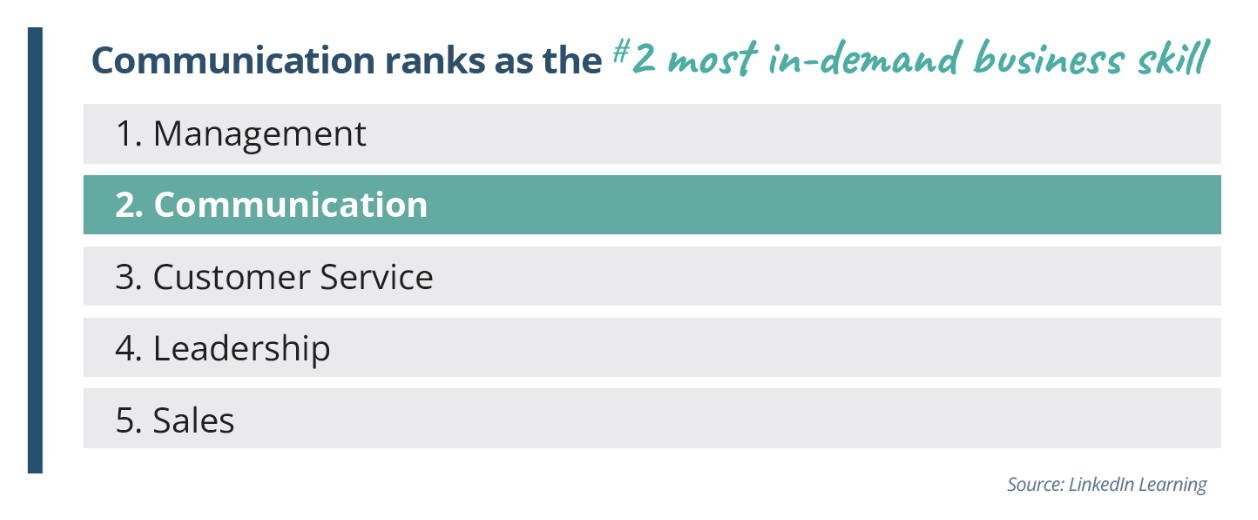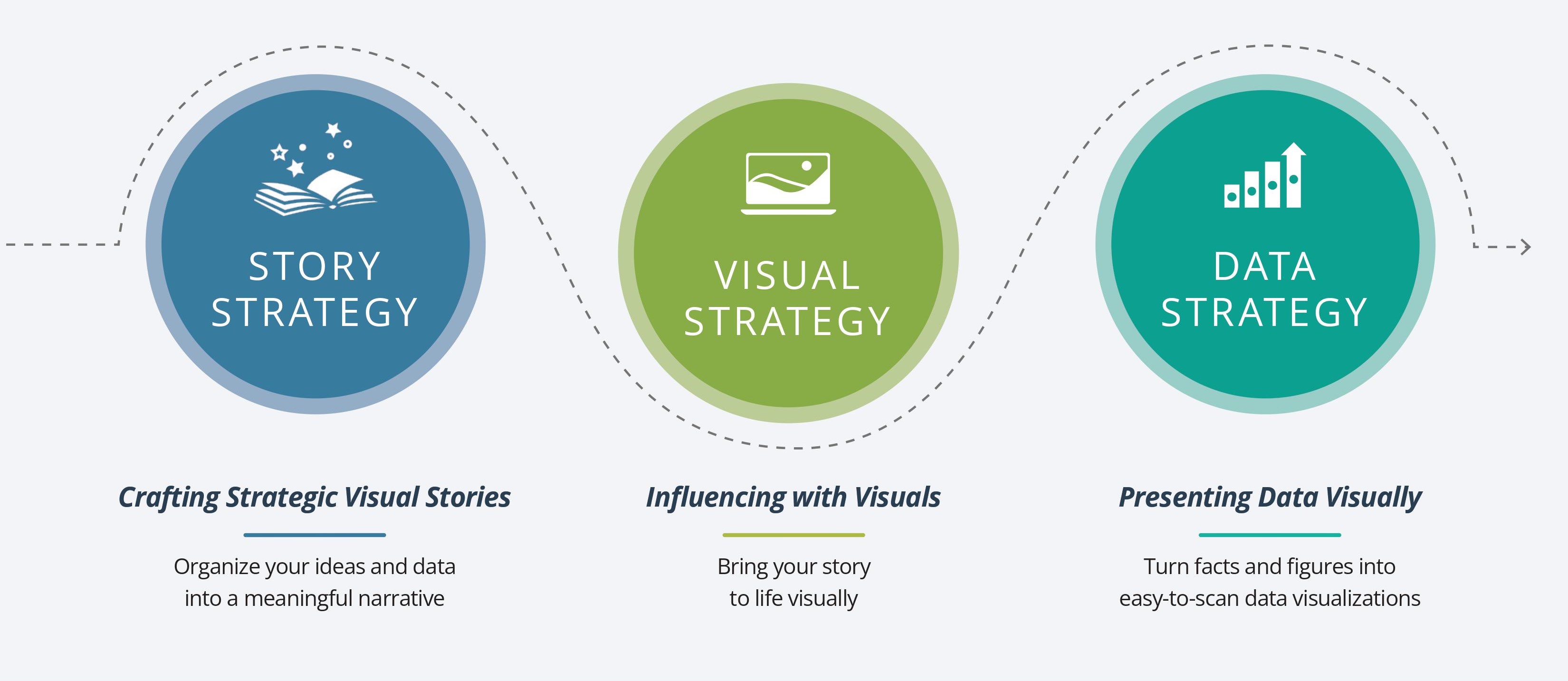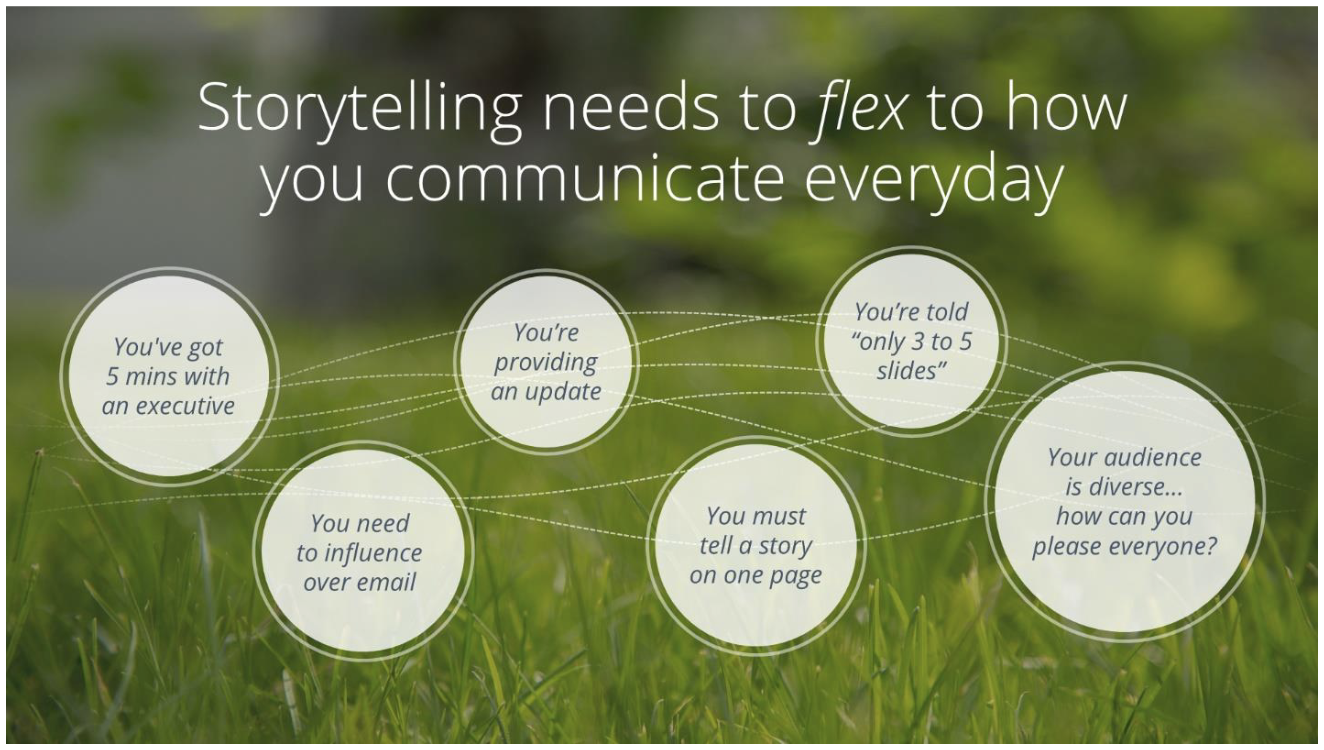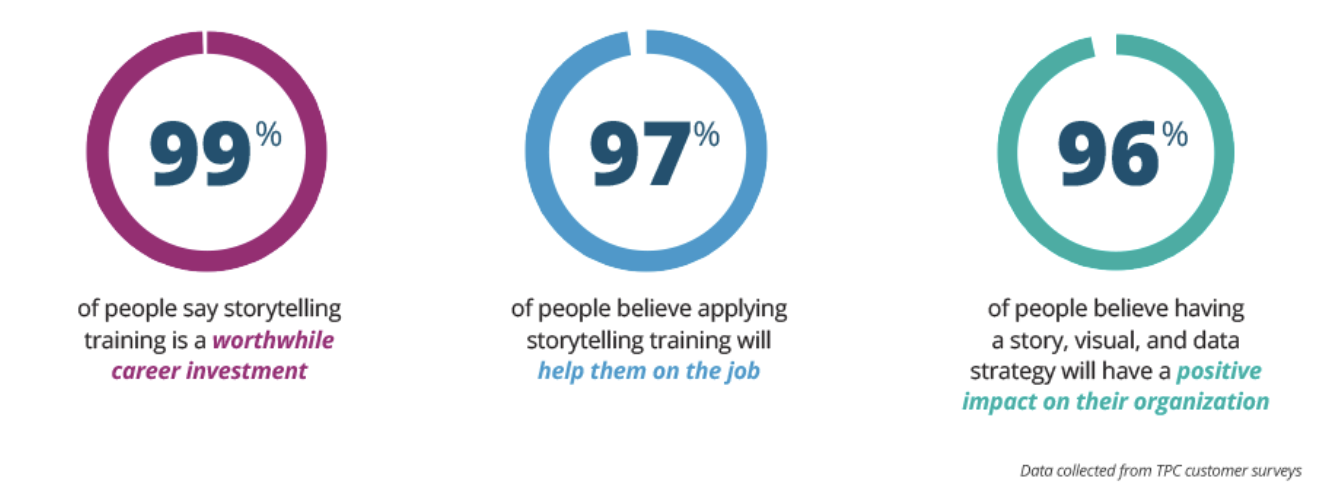Everyone knows how critical people are to the resilience and success of any operation. Today’s leaders recognize that they need to advance strategic initiatives by giving their people the skills to demonstrate value, influence decision-making, and drive business forward. But the reality is, everyone is moving fast, has lots of ideas and data to communicate, and needs to adapt to a variety of customer and stakeholder needs—all with limited time and resources.
Although many of us are accustomed to doing more with less, now more than ever it’s critical that we build confident and resilient teams that can handle whatever comes their way. One way to do this is to arm teams with a common language and framework to communicate their strategy, ideas, and data with clarity.According to a Microsoft work trend report1, the average employee spends 57% of their time communicating (think meetings, email, and chat) and 43% creating (in documents, spreadsheets, and presentations).
When you consider that all of our time at work is spent either communicating or creating things as a means to communicate, it’s never been more essential to have clear and concise communication across your organization.

According to a recent study, 93% of business leaders acknowledge that effective communication is the backbone of their business. But nearly three in four business leaders say their teams struggled with communicating effectively over the last year. And here’s the real kicker: Poor communication can cost your organization $12,000+ per employee every year.2
Of course, those numbers don’t convey how poor communication manifests itself in everyday business interactions. Think about all the ineffective meetings that lead to yet another meeting to gain clarity. Consider all the poorly communicated initiatives that don’t achieve results. Or how about the lack of collaboration that stifles innovation, and the snooze-worthy decks that miss the chance to influence and require valuable time to rework? And finally, the data dumping that lacks any insight or recommendation, leaving decision- makers decoding, “What do you want me to know or do?”
![]()
Over time, these deficiencies add up, and they all point to one root issue—a lack of effective communication skills. The question, then, is how do we address this skills gap… and what’s the best way to integrate the learned skills into your organization?
Storytelling is the key to transforming people into strategic communicators and influencing organizational change
It’s time to empower your people with the skills and capabilities to help progress strategic priorities, deliver on long-term value, and optimize business impact. Here are six ways you can use storytelling to develop your leaders – and elevate your business:
- Uplevel the conversation
Storytelling helps make employees more dynamic communicators, while also giving them the ability to move conversations from tactical to strategic. And because everyone can relate to a powerfully constructed story, conversations are more productive across the business, as well as with external customers. - Boost executive presence
Storytelling helps you display mastery of material and flex your narrative in real-time to meet the diverse needs of your audience. The result? You gain the confidence to connect authentically and with more authority. Plus, knowing how to choose visuals with purpose and intention will maximize the impact of your message, make you (and your ideas) more memorable, and help you stand out from the crowd.  Supercharge data literacy and analytics
Supercharge data literacy and analytics
Every day, data drives business-critical decisions. Knowing how to extract and interpret data is only one side of the coin; the other side is having the data literacy and analytics skills to transform data into insights. Storytelling gives anyone who works with data the skills to curate and present data that advances the story, which will help stakeholders understand complex concepts, remember key information, and ultimately make informed decisions.- Communicate change
According to McKinsey, 70% of change communications and programs fail to achieve their goals.2 Getting employee buy-in and engagement is critical to any successful transformation effort. Storytelling is your secret change agent. It humanizes the “why, what, how” to your audience, which is an effective way to build empathy, community, and trust with employees. - Align cross-functional teams
Uniting teams with a common language establishes a mutual methodology for teams to share ideas, collaborate, and get on the same page. Storytelling also helps improve efficiency and productivity; teams will spend less time in meetings explaining slides and instead engage in meaningful dialogue that helps accelerate decision-making. When teams are working from a common framework, it helps eliminate review cycles and costly rework.  Give everyone a voice
Give everyone a voice
Creating equitable opportunities and inclusive language are now baseline expectations within Diversity, Equity, and Inclusion (DEI) initiatives. Employees want a company culture that provides a sense of belonging and allows everyone to feel seen and heard. Storytelling skills can be scaled across the entire organization, giving everyone a seat at the table and the ability to effectively share their ideas, no matter their role or seniority.
A unique methodology to drive business forward
So how can you make storytelling relevant and practical to everyone in your organization? We believe the best communicators need a story strategy, visual strategy, and data strategy to help them create and deliver impactful visual stories.

Why story strategy?
Applying a story strategy to your business communications allows you to connect authentically with your audience while giving them a reason to care. Learn how to leverage the power of storytelling and integrate it into anything you say, send, deliver, or present (hint: think presentations, 1-pagers, or emails). Get a practical framework to turn your ideas and data into meaningful business stories that are clear, actionable, and memorable.
 Why visual strategy?
Why visual strategy?
Storytelling fundamentals are essential, but storytelling without visuals is only half the story. Molecular Biologist John Medina explains: three days after hearing a piece of information, you typically only remember 10% of it. But add a visual and you’ll remember 65%. Effective storytelling requires the skills and mindset to choose visuals with purpose and intention. With an effective visual strategy, every visual in your story will be relevant, bolster your insights, and support your narrative.
Why data strategy?
Too many numbers and graphs (aka data dumping!) can overwhelm and disengage audiences, but wrapping data in story and visuals gives decision-makers the context they need to understand what the numbers are actually communicating. A data strategy will give you the tools and skills to create easy-to- scan charts, tables, and graphs that cut through the noise and lead to actionable data insights.
Get the skills and confidence to flex your story
Having a storytelling framework is essential to crafting a powerful and persuasive narrative. But beyond having good story structure, we also need to be able to flex to how we communicate every day. After all, we know storytelling isn’t one size fits all. So what do we mean by flexing your story?

Imagine you’ve spent countless hours preparing to present to a room full of executives, and at the last minute you find out your 30 minutes have been cut down to five, or maybe as you’re gearing up for a team presentation, your boss tells you “no more than 3 to 5 slides.” And what if you’re trying to secure a deal with a decision-maker but need to influence and sell your ideas over email?
![]() Learning how to flex your story to adapt to these scenarios – and also knowing how to share your story with diverse audiences – is a skill as critical as storytelling itself. The ability to pivot in the moment will boost your confidence and executive presence, while putting your audience in the driver’s seat to make them feel like they are part of a two-way dialogue.
Learning how to flex your story to adapt to these scenarios – and also knowing how to share your story with diverse audiences – is a skill as critical as storytelling itself. The ability to pivot in the moment will boost your confidence and executive presence, while putting your audience in the driver’s seat to make them feel like they are part of a two-way dialogue.
Impact business outcomes and influence organizational change
Want to hear firsthand how having a story, visual, and data strategy has helped companies like yours
drive business forward?
- “It’s rare to find [a skill set] that can directly impact the performance and transformation of an organization. [Storytelling] is truly a change agent.” – Colgate-Palmolive
 “We have been killing it with our learnings! We’re establishing value quickly with teams as we implement our new storytelling mindset and approach.” – Medtronic
“We have been killing it with our learnings! We’re establishing value quickly with teams as we implement our new storytelling mindset and approach.” – Medtronic- “It’s not often you find a no-nonsense approach that can impact your business and talent pool. We’ve been adopting these storytelling principles for years and never looked back.” – Meta
- “There’s no greater skill than being able to influence and translate data into insights. [Storytelling] is the winning
formula.” – Oracle - “Storytelling has been one of the most invigorating learnings our organization has invested in. It’s enabled us to show up differently, not just internally, but with our retailers.” – Kraft Heinz

References:
1 Microsoft Work Trend Index Annual Report, Will AI Fix Work?
2 Grammarly/The Harris Poll, 2023 The State of Business Communication
3 McKinsey & Company, Changing Change Management
